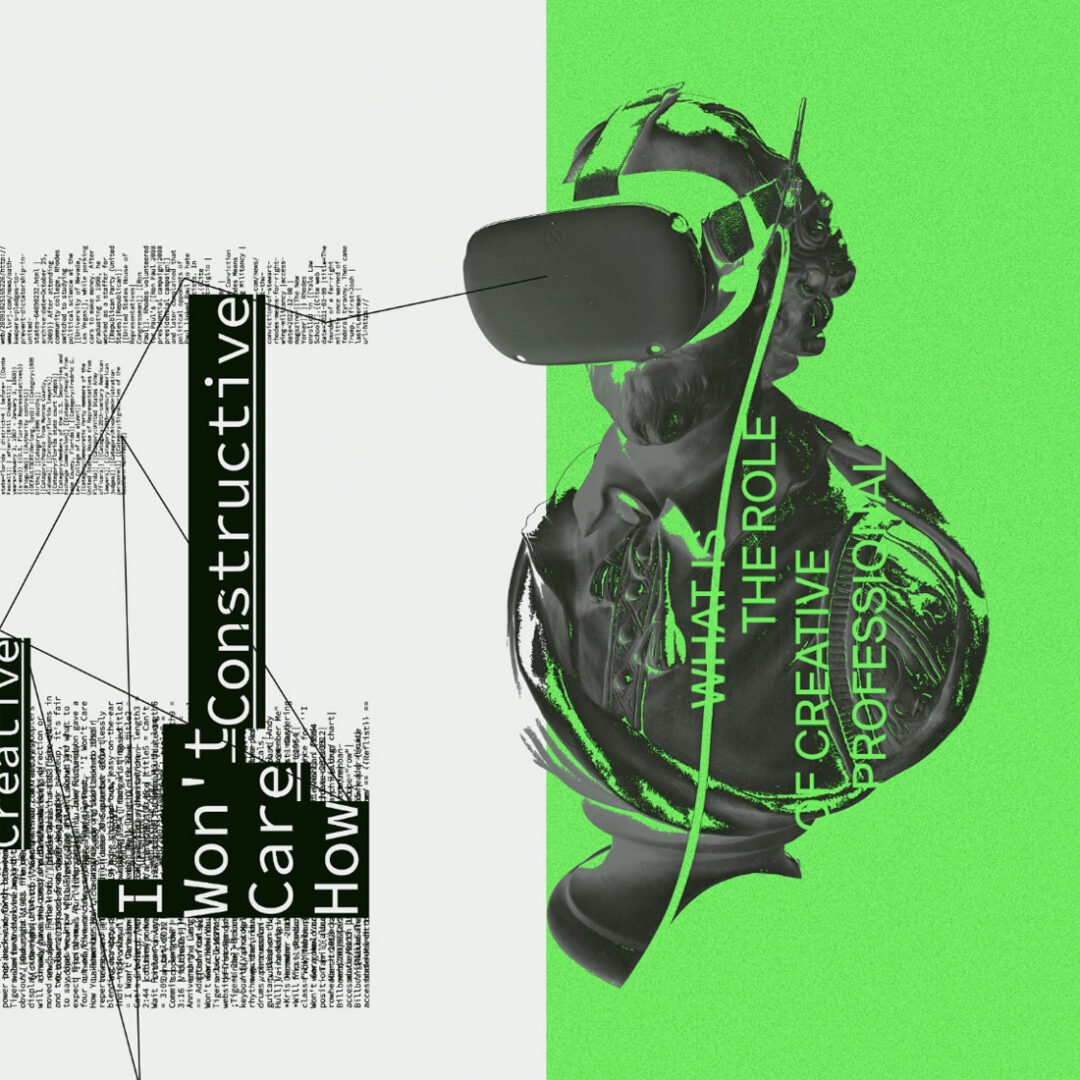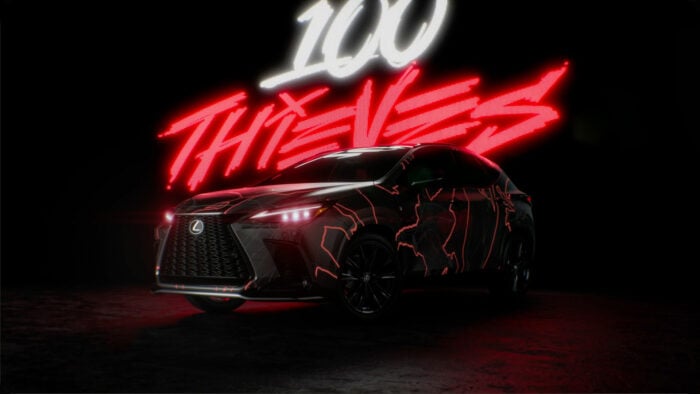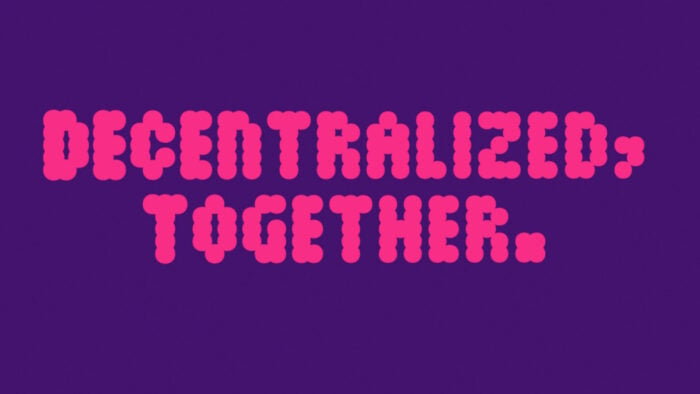How to use generative design in branding?
Whether online or offline, today’s media landscape is one thing above all: loud. More and more messages are reaching us through more and more channels, fighting for the scarcest commodity on the advertising market: our attention. To survive in this shark tank, it’s no longer enough for a brand to simply project its image and message to the outside world. It’s about leaving a lasting impression. One way to achieve this goal is through the use of generative design.
Looking back on almost twenty years of experience in the industry, I am convinced that branding is primarily about building a meaningful connection between brand, environment and customer. Although this goal can be achieved by traditional means, I see particular potential for the use of generative design.
The key
question →
Prospective clients typically ask me the same question: How can generative design be used in branding at all? This is no coincidence, because the method is still quite new in marketing and for that matter is used in very different ways. I would even say that every designer has a very personal approach here. But as one of the few who have already been able to implement a large number of commercial projects with generative design, I can distinguish at least four areas of application that offer a clear added value for branding.
Team up with technology
Before we turn to the application, however, I would like to mention one special feature in generative design: the approach to collaboration. In my experience, the generative program is not just a tool but a creative partner – and should be treated exactly as such. Let me give you an example: generative design enables us to automate the visual execution – the final step of the design process. Thus, designers no longer have to create every single design themselves, but can use the program to generate a variety of results and then choose from the emerging options. This is where a strength of the program – iteration, i.e. the repetition of a process – and a human strength – intuition, in this case the feeling for aesthetics – meet. This special form of collaboration not only saves resources and increases the number of results. It also increases their quality. A clear win-win that simply requires the right attitude and mindset.
Brand building
systems →
Automation is one of the many benefits of working with a generative system, making it easier for designers and cheaper for entrepreneurs. But as a creative director, I quickly saw more in generative design than just a tool for scaling the execution of the design process. I asked myself new questions, wanted to know what could emerge from a teamwork between man and machine and what creative potential was hiding in this method. I had the intense feeling that generative design could revolutionize the world of branding. In the process, I developed four approaches to what this revolution could look like:
1. Brand Experience
Generative design systems can be developed to engage with a specific aspect or feature of a brand (or product).
One example is the Munken Creator, a generative design system that allows designers to experiment with the font Munken Sans. Accessible to everyone as a simple browser application, the tool invites playful engagement with the typeface as a central brand element of Munken. It brings the traditional product back into the design discourse in an unusual way and at the same time creates associative anchors for its users through direct experience and playful engagement with the brand.
2. Adaptive Brand Identity
Generative design systems can be developed to adapt a dynamic brand identity to different output formats and individualise it for different occasions without the use of complicated guidelines and costly specialists.
Once the elements of a brand identity are defined, it is possible to integrate them into a generative design system. The generative program contains the specifications for their use as well as the specifics of possible output formats such as poster, video or animation, so that even non-professionals can generate aesthetically and technically flawless results. One example is my cooperation with the Philharmonie Luxembourg. Here, music is not only a central element of the institution, but has also became the core of its brand identity through the support of a generative system, in that the Philharmonie’s logo responds to sound. When a melody is played into the system, it translates the sounds into design decisions through which the sound becomes visible in the logo. This way, a logo can be created for each new event – without any additional effort – and is literally shaped by the visitors’ upcoming experience.
3. Data Design
Generative systems can be developed to visually link the design of a product with its history or future. The basis of this connection is data that reflects features or even the creation process of the product.
In a generative design system, data is linked to specific decisions, which then form the visual identity of a product. This approach makes it possible to communicate a product’s unique characteristics to the outside world and also allows its identity to change dynamically with them, if desired.
The cooperation with Brute is an example from my portfolio where this interplay has been particularly successful. As a winery based in the north of Germany, Brut plays with the expectations of its customers. Only very few people can imagine that good wine can be produced in a cold, rather rainy region. Brute therefore transforms the special weather conditions underlying its creation into the brand’s USP and anchors them in its visual identity through generative design: driven by the data of wind, rain and sun, the design of each wine vintage thus emerges from the very weather conditions that have shaped its taste character.
4. Visual Storytelling
Generative design systems can be developed to tell a brand story visually through the integration of data.
Influenced by the specific events that underlie its data sets, generative design allows the emergence of an unique visual branding approach that adds new depth and complexity to storytelling. This approach is evident in a system I developed for Lexus. To celebrate a successful partnership with the eSports team 100 Thieves, we transformed specific achievements on their way to winning the League of Legends World Championship title into the design of an art car that now tells the story of their victory. It literally it is a success story told on the surface of a car.
Inspire
meaningful
connections →
I am convinced that there are more applications of generative design in branding that I may not know of yet and that even more will develop in the upcoming years. In order to drive this revolution forward, I have made it my task to introduce designers and marketing managers to the possibilities of generative design systems in branding. I want to anchor the method as an integral part of the marketing world, turn down the volume in the battle for the attention of potential customers and instead inspire meaningful connections between brand, environment and customer.
If you want to learn more, visit the method page where I dive deeper into the inner workings of generative design or have a look at the data design dictionary to explore the components of a generative design system in more depth.















